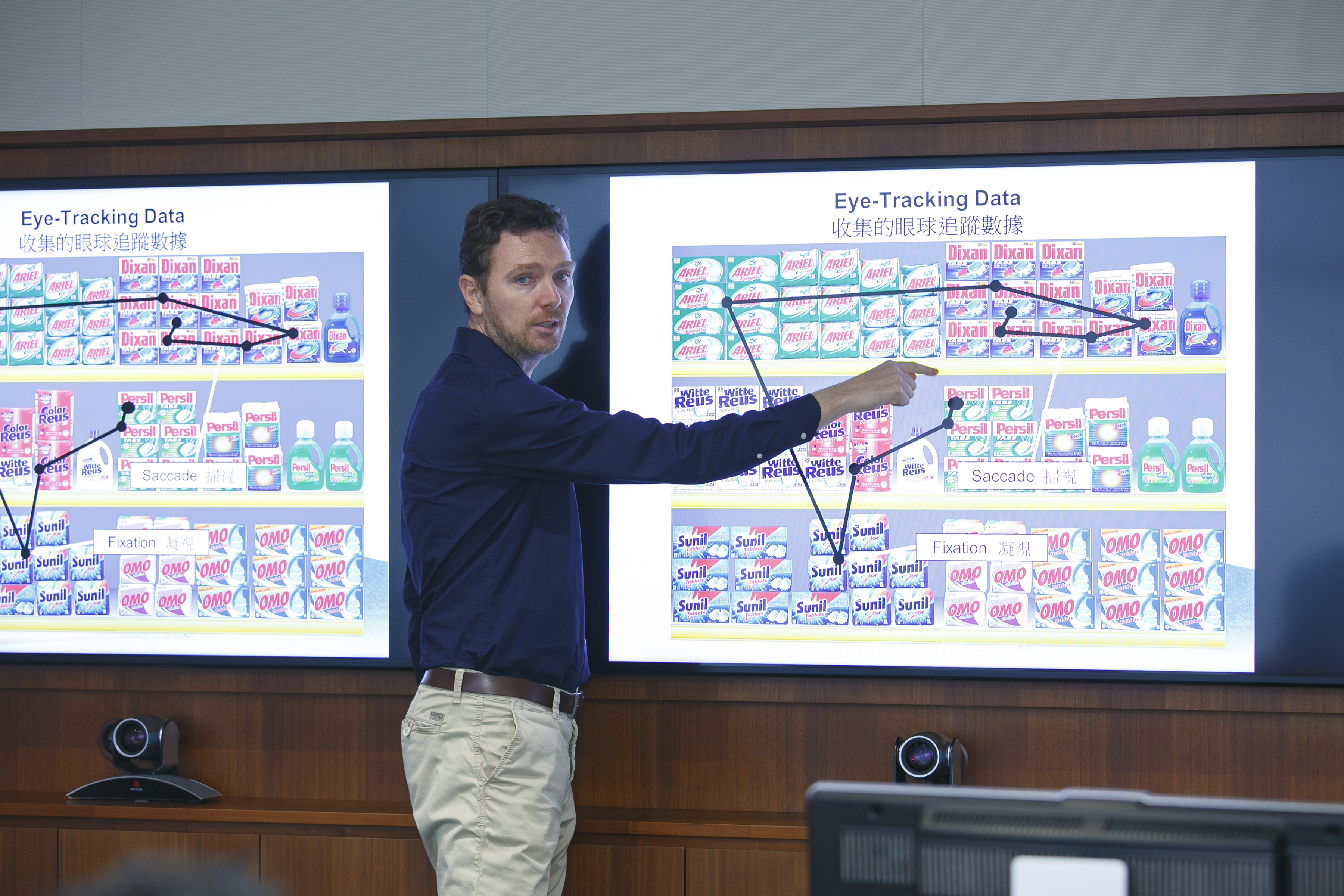

How can a brand attract the visual attention of consumers on websites or in supermarkets?
Ralf van der Lans, Associate Professor of the Department of Marketing at HKUST, conducted eye-movement tracking experiments in Hong Kong and the Netherlands to find out how factors like package design and colors, shelf layout and position, as well as advertisements affect consumer buying decisions.
Online Search Ads Improve Efficiency
One of his studies, which involved an eye-tracking experimenttaken by 130 undergraduate students, measured the effectiveness of online display advertisements. The students were first presented with four online display ads and then asked to search for a respective target product. These products included brands of cameras, fragrances, shoes, sunglasses and watches. The experiment indicates that online display ads can reduce the online shopping search time by as much as 20 per centif the ads are presented with the package image.
Professor van der Lans points out that with the package image displayed, the students can find the “right product” in about five seconds compared with eight seconds without the package image. When designing online ads, the bigger the package image the better, and ads should look different from the website itself, instead of “blending in”.
Products Benefit Most at Eye Level
Professor van der Lans also conducted another experiment in the Netherlands, where 109 consumers were given 10 seconds to search for brands of laundry detergent on a computer-simulated shelf. The results show that on average one-third of visual attention is determined in-store (i.e. package design, shelf layout).
Products located at eye-level position on shelves can attract the most visual attention. New brands should avoid following the package design or color of some market leading players. For example, consumers tend to go for “red” if they buy Cola for obvious reasons.
Professor van der Lans says eye-movement research can be valuable for manufacturers, retailers, website and market research companies as they can learn more about consumer behavior and promotional ideas. With the advancement of eye-tracking technology, he expects to see more applications in future.
Professor van der Lans also shares his research with the press including Apple Daily, Hong Kong Economic Times, Wen Wei Po, Ta Kung Pao and Hong Kong Economic Journal to let more people understand the value of eye-tracking technology in marketing.



